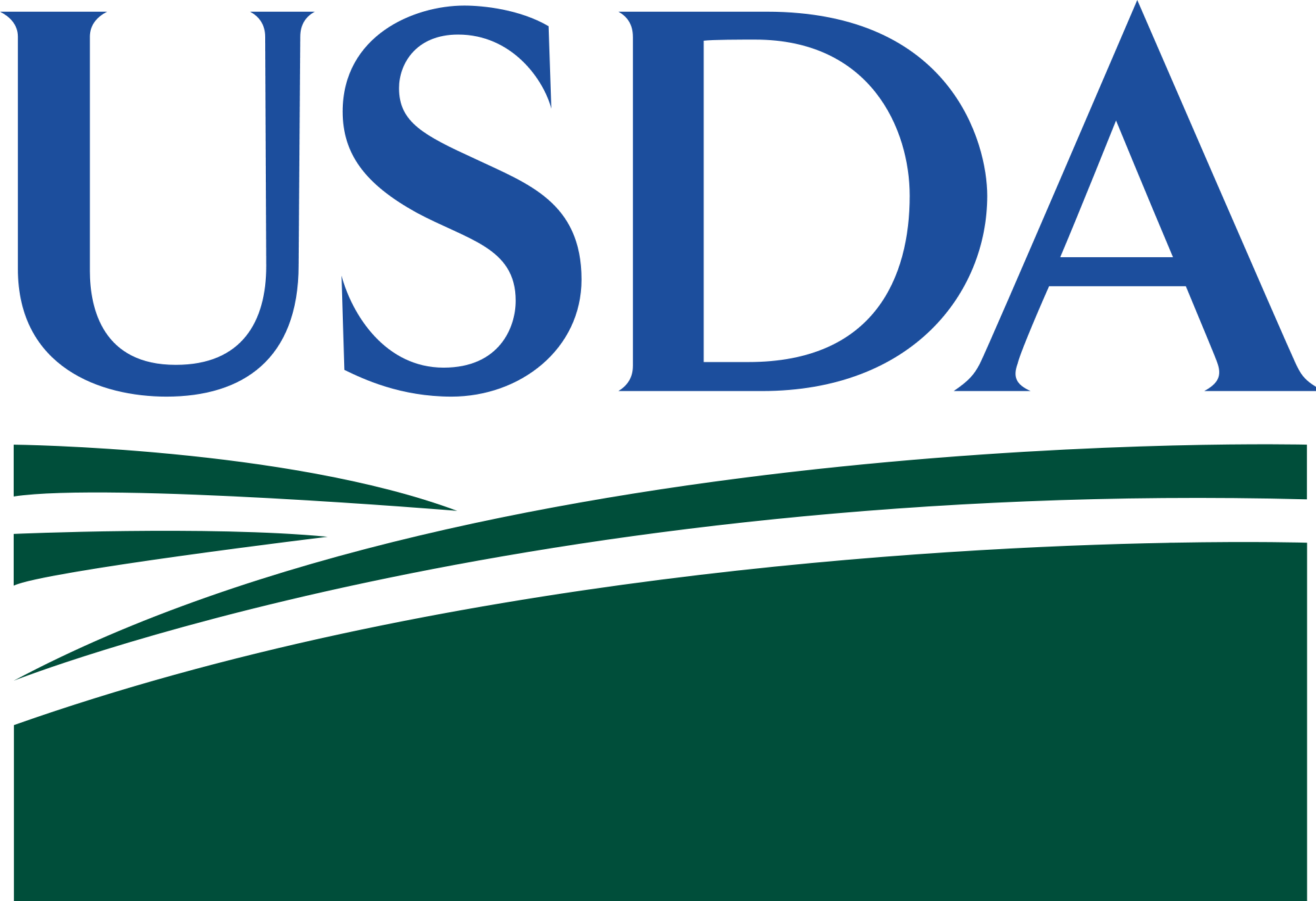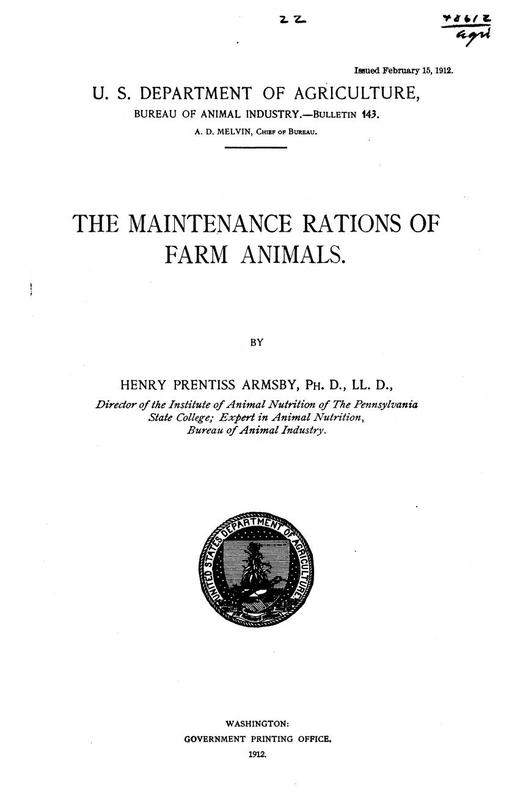The Maintenance Rations of Farm Animals
Creator
Date
1912
Subject
Excerpt
Feed is supplied to farm animals in order that they may either yield products useful to man as materials for human food and clothing or serve him by the performance of mechanical work. But as a factory must first be supplied with enough power to keep in motion the shafting, belting, and other machinery before any product can be turned out, so the animal mechanism must be provided with sufficient feed to maintain the processes essential to life before any continued production is possible. The amount of feed required for this purpose is called the maintenance ration of the particular animal.
It is the quantity of feed necessary simply to support the animal when doing no work and yielding no material product. If an animal receiving exactly a maintenance ration were subjected to a so-called balance experiment, there would be found an exact equality between income and outgo of ash, nitrogen, carbon, hydrogen, and energy, showing that the body was neither gaining nor losing protein, fat, carbohydrates, or ash.
The word "maintenance" is sometimes used popularly in another sense to signify the total amount of feed required, for example, by a horse in order to perform his daily work or by a calf in order to make a normal growth. It is important to grasp the idea that, in its technical sense, the maintenance requirement means the minimum required simply to sustain life. The feed of the horse or calf would, from this point of view, be regarded as consisting of two portions; one of these is the maintenance ration, which if fed by itself would just support the horse at rest or the calf without growth, and the other the productive portion of the ration by means of which work is done or growth made. To recur to the illustration of the factory, the maintenance ration keeps the empty machinery running, while the additional feed furnishes the power necessary to turn out the product.
It is the quantity of feed necessary simply to support the animal when doing no work and yielding no material product. If an animal receiving exactly a maintenance ration were subjected to a so-called balance experiment, there would be found an exact equality between income and outgo of ash, nitrogen, carbon, hydrogen, and energy, showing that the body was neither gaining nor losing protein, fat, carbohydrates, or ash.
The word "maintenance" is sometimes used popularly in another sense to signify the total amount of feed required, for example, by a horse in order to perform his daily work or by a calf in order to make a normal growth. It is important to grasp the idea that, in its technical sense, the maintenance requirement means the minimum required simply to sustain life. The feed of the horse or calf would, from this point of view, be regarded as consisting of two portions; one of these is the maintenance ration, which if fed by itself would just support the horse at rest or the calf without growth, and the other the productive portion of the ration by means of which work is done or growth made. To recur to the illustration of the factory, the maintenance ration keeps the empty machinery running, while the additional feed furnishes the power necessary to turn out the product.
Title
The Maintenance Rations of Farm Animals
Publisher
U.S. Department of Agriculture
File(s)
The Maintenance Rations of Farm Animals.jpg
(image/jpeg)
 An official website of the United States government.
An official website of the United States government.


